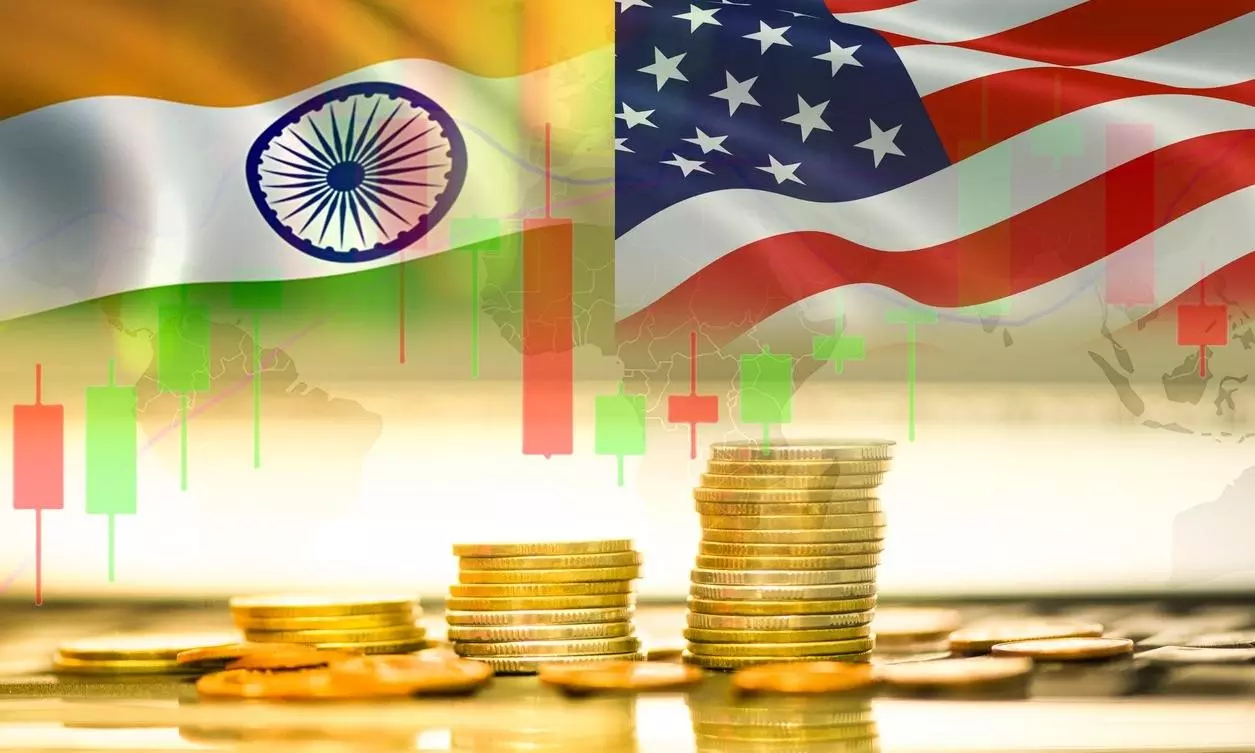
How US Fed rate cut brings both relief and risks for India
It could make emerging markets like India more attractive to global investors, but it could also lead to a weaker rupee and pose inflation risks

The United States Federal Reserve on Wednesday (September 17) trimmed its key interest rate by 0.25 percentage point, bringing it down to 4-4.25 per cent. The move was widely expected, but what caught investors’ attention was the Fed’s cautious tone, with its chair Jerome Powell describing the decision as a “risk-management” step, rather than a strong signal of a policy pivot.
For India, the cut presents both pros and cons as lower US rates usually make emerging markets like India more attractive to global investors, since the gap between returns at home and abroad widens. In simple terms, when the world’s safest asset, US government debt, pays less, riskier but higher-yielding assets in countries like India look more appealing.
Also read: US Fed cuts rates by 0.25 pc, projects two more this year
IT, pharma stocks up
Markets were slightly upbeat over the Fed’s move on Friday (September 19), with the Sensex climbing 0.50 per cent to 83,108.92 and the Nifty up 0.44 per cent at 25,441.05 in early trade. Information technology stocks led the gains, rising around 1 per cent, followed by pharmaceuticals.
Both sectors earn a large share of their revenue from the US, so any sign of easier credit conditions in America quickly boosts confidence back home.
Also read: Gold prices jump to record high; traders bullish
But the initial euphoria was followed by unease in the currency market. The rupee slipped to 88.06 against the dollar, reflecting how Powell’s guarded remarks revived demand for the greenback. A weaker rupee matters because India imports much of its oil and industrial inputs. If the currency slides too far, it makes petrol, diesel, and metals more expensive, fuelling inflation at home.
Did Fed put RBI in tight spot?
Naval Kagalwala, chief operating officer and head of product at Shriram Wealth, believes the Fed’s signal has put India’s central bank in a tricky position. “The Fed’s statement emphasised a shift in labour market conditions, with slower job gains and rising unemployment. It also hinted at two more cuts this year,” he said.
Also read: What RBI's shift in MPC stance from neutral to accommodative means
“For India, the focus now turns to the RBI’s October meeting. While rates here may stay unchanged, inflation projections and assumptions will need close watching given the rupee’s sharp depreciation and ongoing global uncertainty.”
Bond traders are paying attention too. Government bond yields, which reflect the interest the government pays to borrow, are influenced both by global and local forces. Lower US yields can support Indian bonds, but supply from New Delhi’s heavy borrowing programme and local inflation will also play a role. Kagalwala expects the benchmark 10-year bond to trade between 6.40 and 6.55 per cent in the near term.
Also read: Sensex, Nifty scale fresh peaks after Federal Reserve slashes interest rates
However, not everyone sees the Fed’s decision as merely a cautious gesture. Vishal Goenka, co-founder of IndiaBonds.com, argues that it “paves the way for the RBI to cut as well”.
He pointed out that Indian banks have been slow to pass on earlier cuts to borrowers because of the steep yield curve — the gap between short-term and long-term borrowing costs. “Addressing that curve through rate cuts could lower borrowing costs for companies and the economy in general,” he said, adding that it is a good time to invest in bonds given the likelihood of further easing.
Commodities rally
The ripple effects of the Fed’s decision stretch beyond finance into commodities. A Kotak Institutional Equities report observed that prices of base metals like aluminium and copper had rallied in recent weeks on the back of a weaker dollar and anticipation of Fed cuts.
Also read: US lawmaker Meeks warns Trump’s tariffs threaten vital US-India relationship
But Kotak sounded a note of caution, pointing out that aluminium’s demand remains fragile and that producers face downside risks despite the price surge. In other words, global liquidity may lift prices for a while, but weak fundamentals eventually catch up.
For the Reserve Bank of India, the dilemma is familiar, according to analysts, as to whether it should follow the Fed in cutting rates to support growth or stay put to guard against inflation and currency slippage. The decision in October will hinge on how the rupee behaves and whether imported costs spiral. Unlike the Fed, which is juggling the twin goals of inflation and employment, the RBI’s priority remains keeping price rises within a narrow band.
Possible rise in fuel, gas bills
For ordinary Indians, the implications are more straightforward. If global money flows pick up, it can support the stock market and keep borrowing costs from rising, analysts say, adding that if the rupee weakens too much, petrol and cooking gas bills will climb, and that will be felt across household budgets.
Also read: RBI’s inflation targeting: Why flexibility should not undermine focus
Exporters like software firms and drug-makers stand to benefit, while sectors dependent on imported raw materials may feel the pinch, they think.
India has often found itself in this balancing act when the Fed moves. The latest cut provides some breathing space, but it also sharpens the need for careful domestic management.
As Goenka notes, the chance to lower borrowing costs is real, but as Kagalwala warns, the risks of a weak rupee cannot be ignored. And as Kotak underlines, global markets can be buoyed by sentiment for only so long before the fundamentals reassert themselves.

